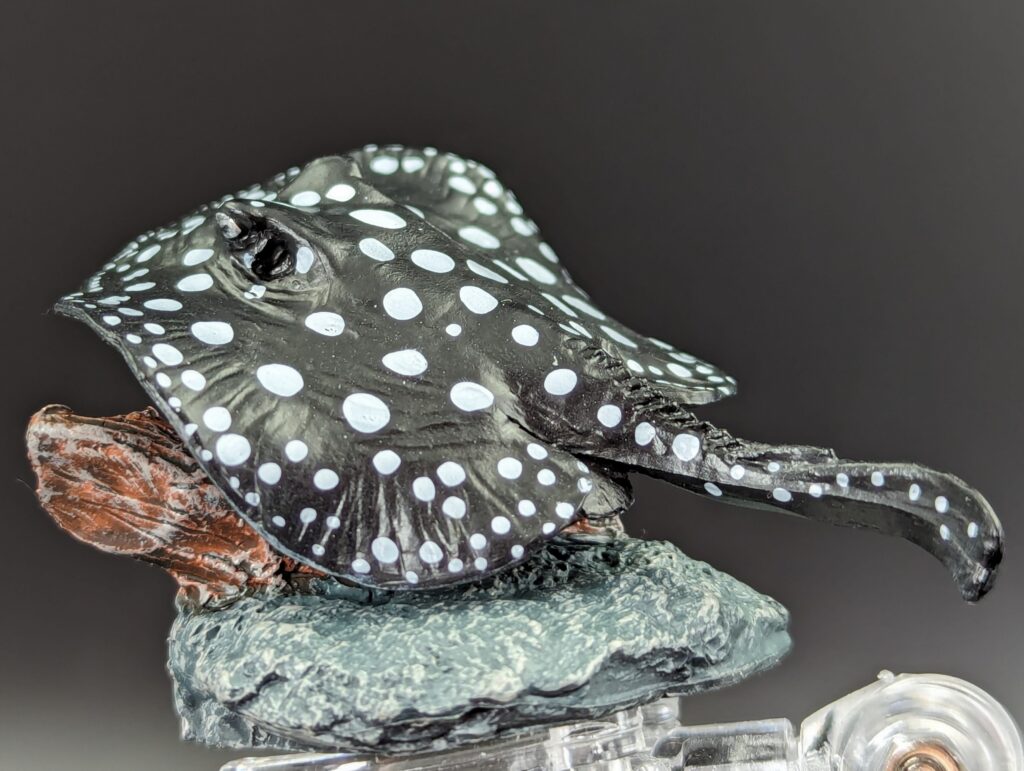
I’m back with a fourth figure in the Mini Ancient Fish series 2 from Bandai. It seems to be, like the first series, the obligatory chondrichthyan in the set of fish representing notable species that have a presumably ‘ancient’ heritage from an evolutionary point of view. Does the figure today represent that? Maybe? But it’s really cool. It’s a figure of the Xingu river ray Potamotrygon leopoldi, one of many exclusively freshwater South American stingrays in the family Potamotrygonidae. Definitely a notable species from a notable group, but as far as ‘ancient’ ray groups…I guess? Fossils are known from the Miocene of Colombia, Brazil and Argentina, but other evidence indicates an origin in the late Cretaceous or Palaeogene, likely from a marine ancestor that was trapped in freshwater habitats. But as far as fish usually thought of as ‘ancient’? There’s probably more ancient ray lineages (like guitarfish, which could use some attention). But ancient is subjective, and it’s a nice model, so all good.

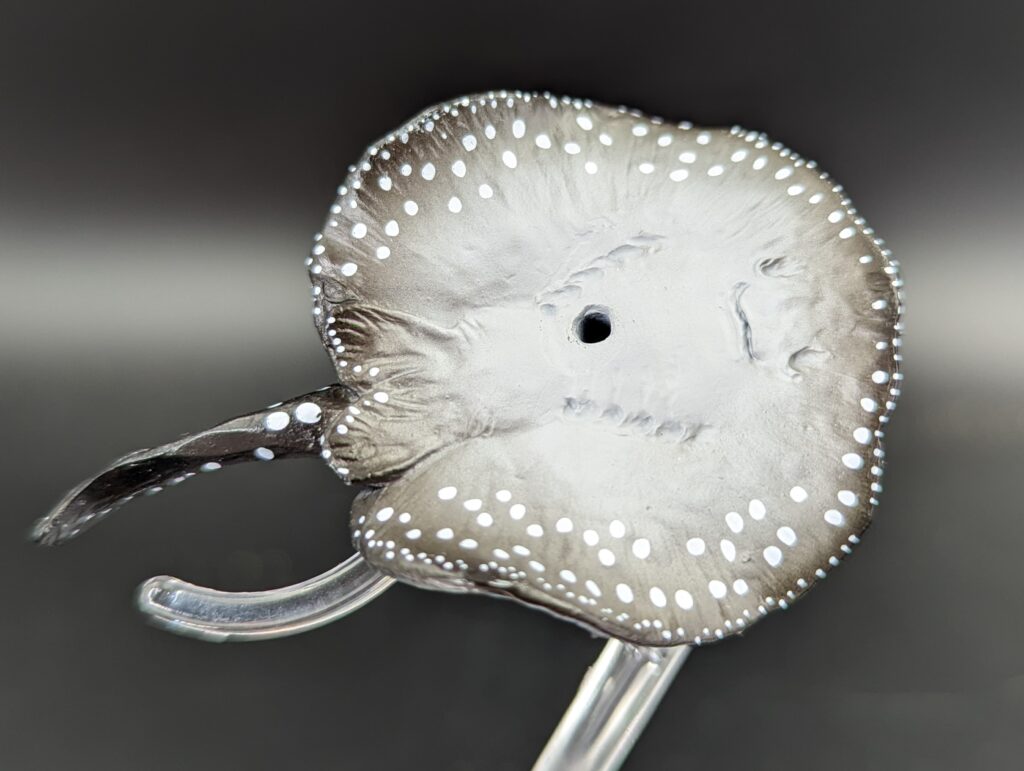
The Xingu river ray (also known as the white-blotched stingray or polka-dot stingray) is a striking ray species from the freshwaters of South America. As the name implies, this ray is found in the Xingu River of Brazil, and is endemic there. The environment here is clearer waters, with a rockier bottom, and indeed this is the preferred habitat of these rays. As with most rays, Xingu river rays prey primarily on benthic organisms, especially those with hard exoskeletons–it turns out that as the rays mature, the shape, strength, and stiffness of their jaws change in shape and mineralization, allowing older individuals to prey on larger and more solid prey. They are moderately sized freshwater rays, with a disc diameter up to 60cm (the rod&reel record is 75cm, the largest ever is 111cm), with females growing larger.
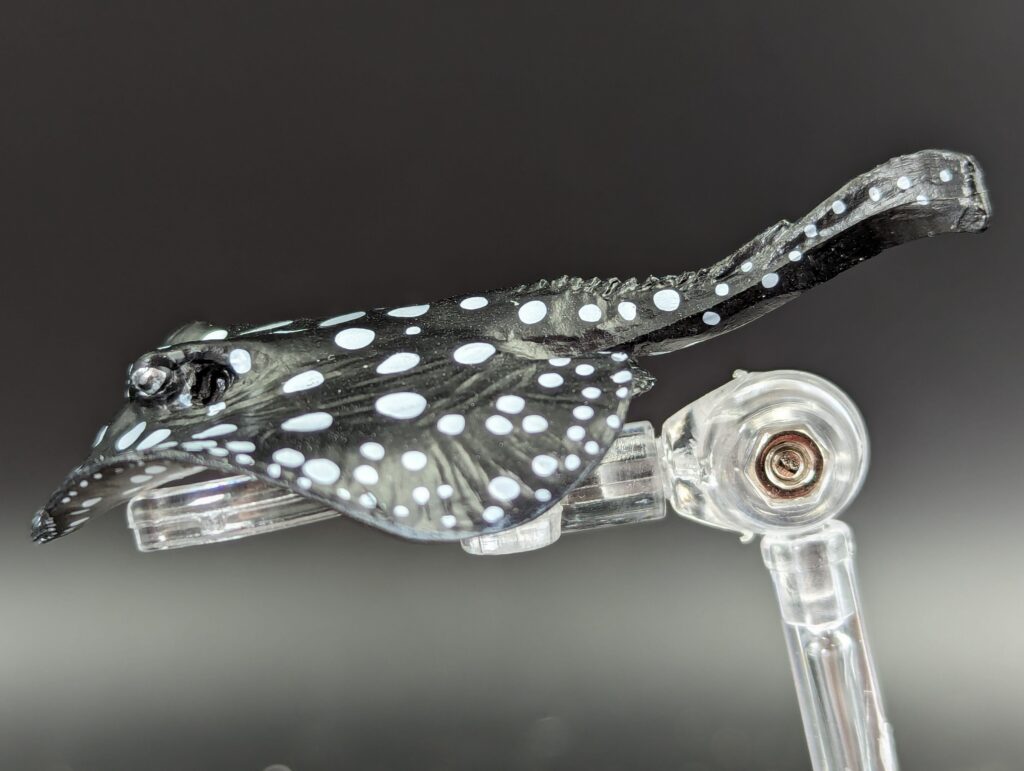

As with most myliobatoid rays, freshwater rays have one or more denticles on their tails modified into a longer, sharp spine that can deliver venom to a predator…or human that isn’t careful. This latter makes rays overall notorious in their ranges, where fisherfolk fear accidental impalement. This can mean the poor fish are often killed or dismembered when caught. Freshwater rays are also uncommon but popular animals to keep in aquaria, both public and private, and can make wonderful display animals if given a large enough space. I remember in my fish store days that there were several popular potamotrygonid species, although the very closely related-to Potamotrygon leoplodi, P. henlei, was a slightly more common one (slightly…still really expensive at the time). I do know of breeders of these and other species in my part of the world now, which is probably for the best. As it is the IUCN lists the Xingu river ray as Vulnerable.

The figure itself is a great representation of the Xingu river ray. As with all of the figures in the series, this one comes with a base. In this instance, the base appears to be a fairly uniform grey with rocky texture, which would seem appropriate. The ray itself attaches to a small log that that rests on the ground surface. And as with all of the figures, the ray can rotate around the peg, allowing the ray to be oriented in a number of directions. The disc is sculpted in a sinuous undulating wave around the diameter of the disc, indicating a swimming fish instead of resting on the ground or burying itself. This suits the choice of base, as the fish is attached in a way that shows it swimming, and gives views of the dorsal and ventral surface. The figure is about 4.3cm wing diameter (WD) and is sculpted as a female (no pelvic claspers present) so assuming a normal-size female individual, the scale would be just around 1:14.
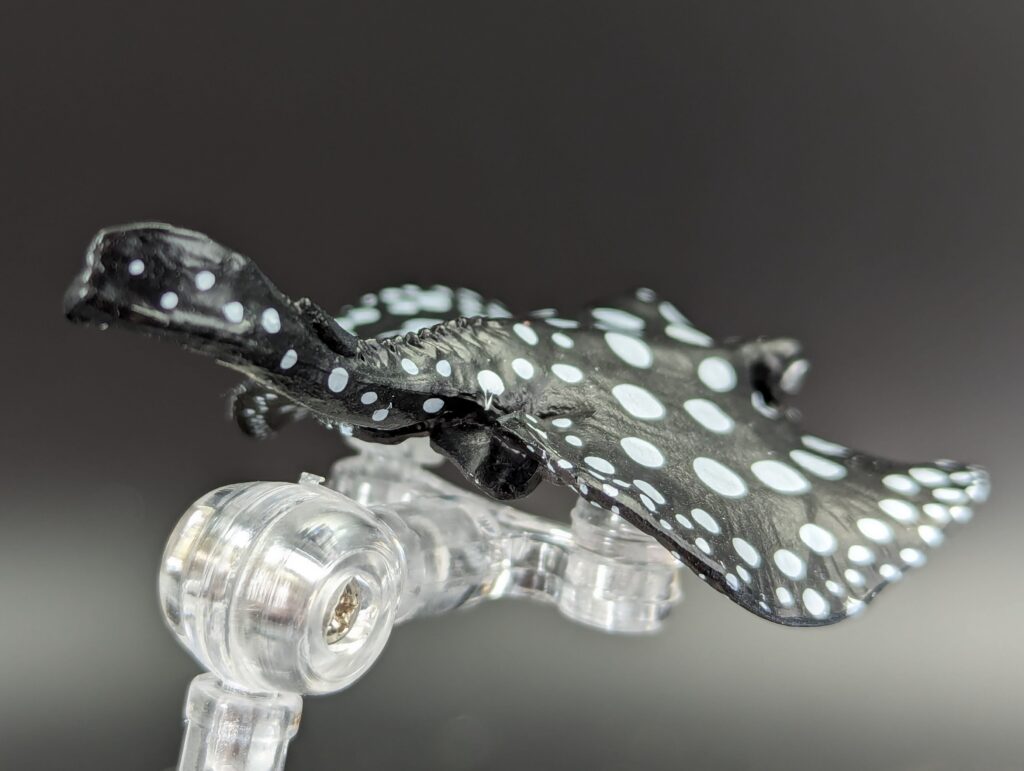
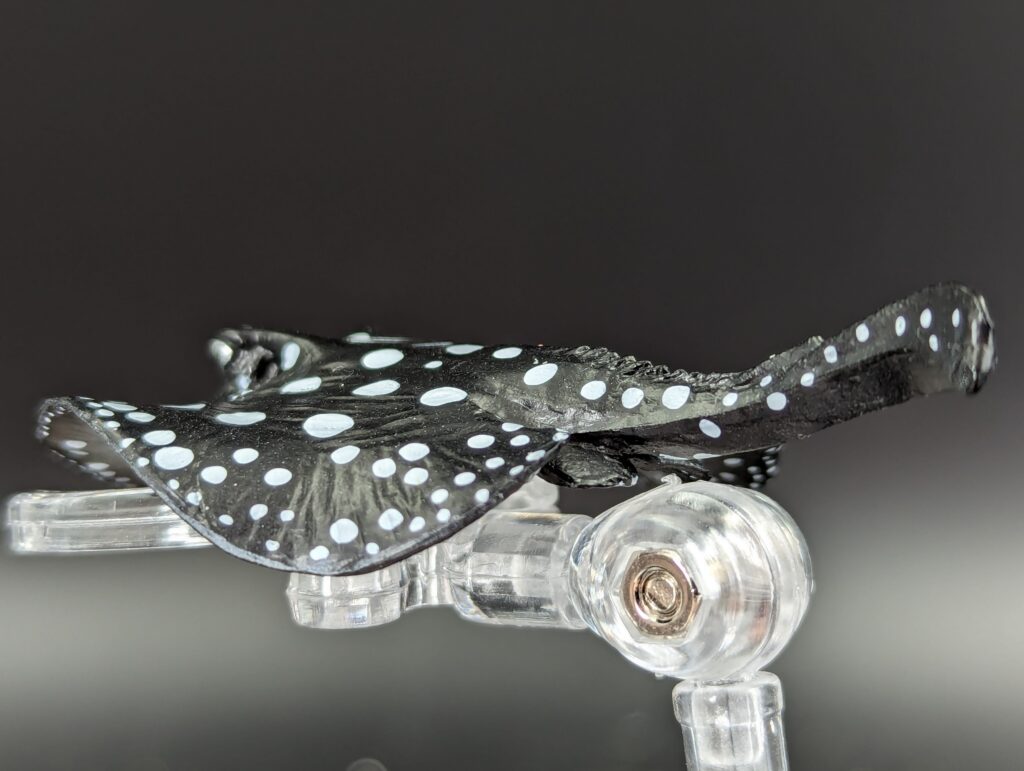
The overall shape is the typical rounded potamotrygonid shape, with a disc mostly circular save for a slight protrusion at the front of the face and the inset of the pectoral wings at the posterior where the tail extends back. The disc is mostly flat around the circumference, with an expanded central body section, rising up from in front of the eyes then remaining roughly the same thickness to the base of the tail; the tail extends beyond the disc by about 3/4 the length of the disc. he tail is thick and wide at the base, tapering quickly with a slight lateral compression, until terminating in the flattened tail fin. Close inspection shows the tail to actually extend to the upper margin of the tail with the lobe entirely below, in proper heterocercal fashion.
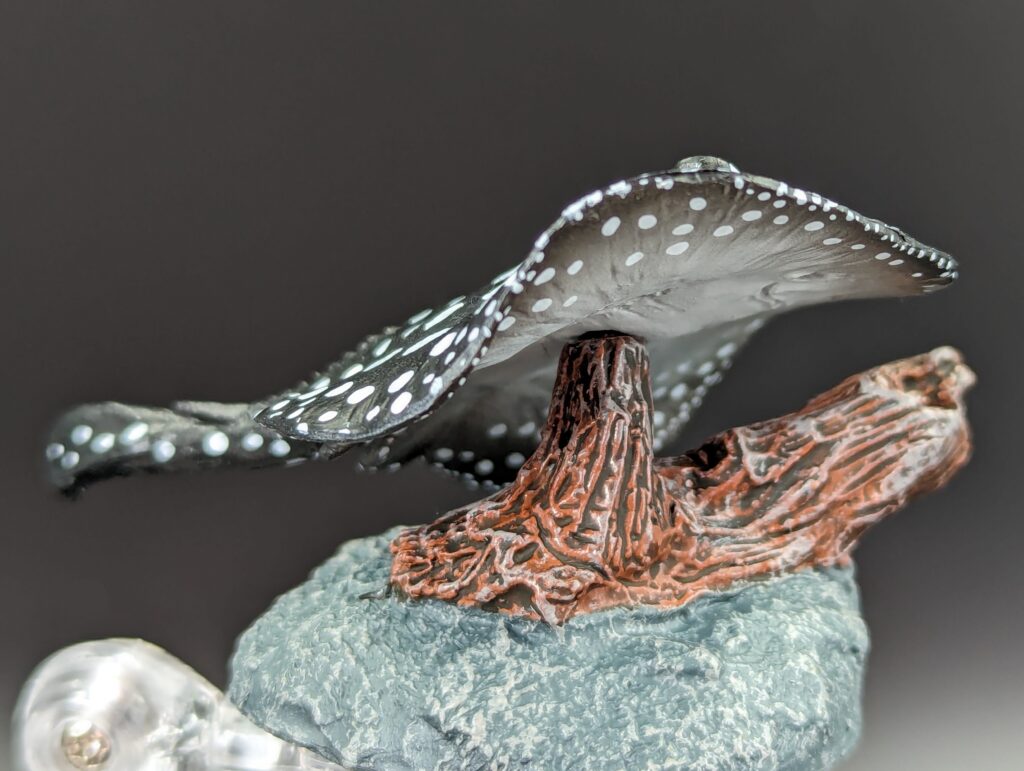
Along the back, from roughly the line of the pectoral fin indents, is a line of small tubercles extending down the tail, ending in a single large, pointed barb (sculpted against the tail). The eyes are the highest point on the body, extending up from the raised body under ridged orbits. The eyes appear to be painted silver or metallic white. Behind the eyes are the large spiracle openings, which would allow the ray to breath while flat against the substrate (or mostly buried therein). There are a number of small folds and wrinkles along the entire disc, giving a sense of moving, flexing tissue. The whole dorsal surface and the entire tail is painted a stark black, overlain with solid white spots. These vary around the body and tail, being largest on the main body and central areas of the disc, and shrinking to a smaller dots as they extend outward from the centre of the body. The dots on the front margin are a fine series of tiny dots, while the lateral margins of the pectorals are a more scattered assortment of sizes. The spots also continue haphazardly down the tail, including along the underside.
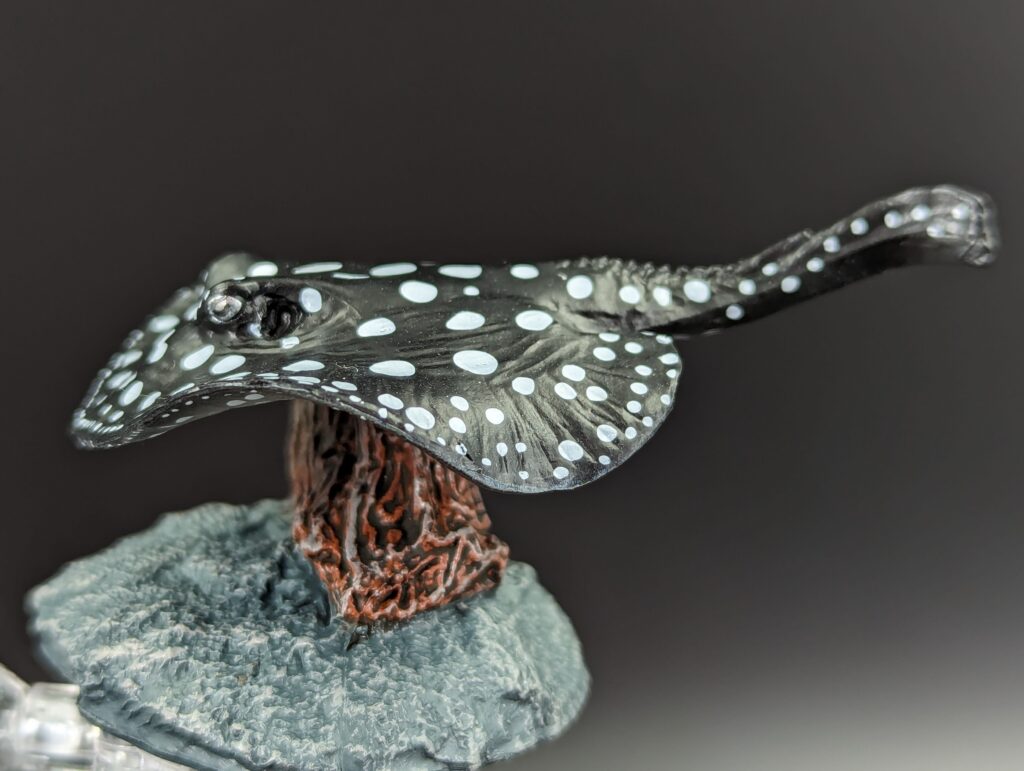
Underneath the model, the outer margin of the pectoral disc is also black, fading quickly to grey in the central body is a dark off-white. The white dots on the outer edge are vey small, ringing the entire disc; large white dots extend further into the fins but not the body. The sculpting on the ventral surface includes the large nostrils and mouth (giving that ‘goofy smile’ look typical of rays’ ventral surfaces); the five gill slits are also deeply incised, with large openings at the distal edges and narrowing toward the body. The pelvic fins are also more clearly visible from underneath, sculpted as separate fins from the pectoral disc (as they should be) and also edged with white dots. Again, there is no indication of claspers so the figure would be a female.
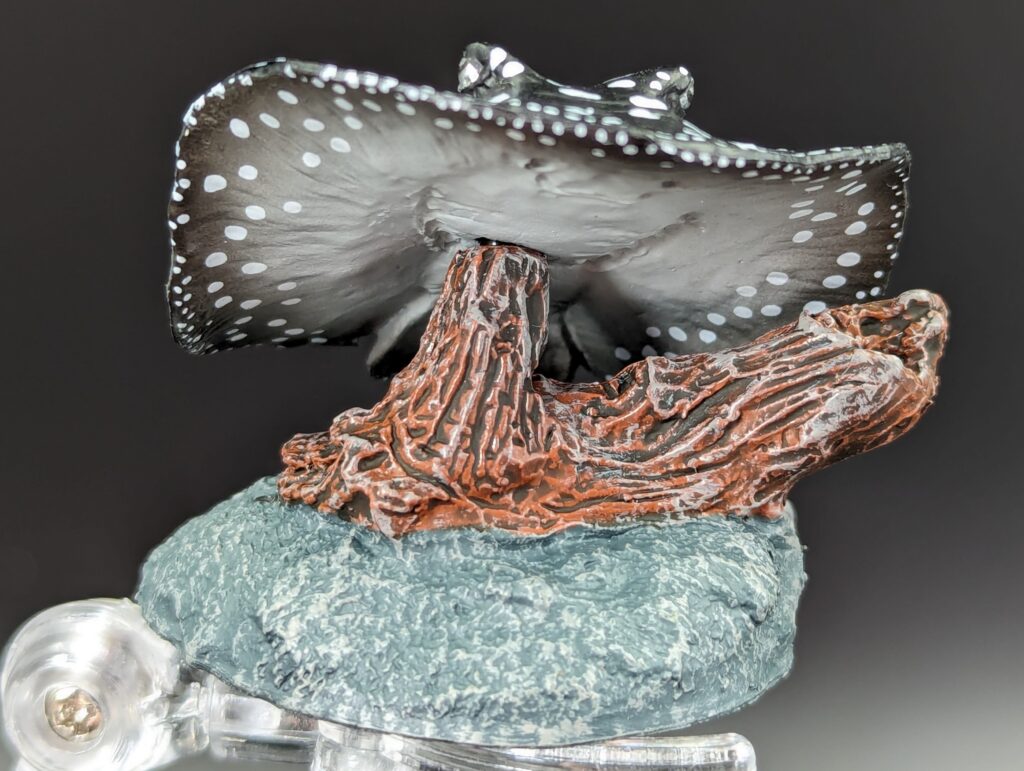
One thing about the dots is that they appear highly individualized in the Xingu river ray, so the large number of spots isn’t unlikely. However, it appears that in real life, these spots would actually have a faint halo around them of a slightly lighter black; and may themselves be more cream-coloured. Overall, though, it is a satisfactory representation. There are very few potamotrygonid figures, with 3 figures released of P. leopoldi and one P. motoro (as a limited release model in my online shop days…) and this one can easily stand with the other two, both of which are no longer available (one for Hikari but not sure of maker, and one from Kaiyodo). I know I’ve said it for the arowana, pirarucu and bichir already, but this is an excellent set and a great way to add some unusual figures to your collection (some of which are very rarely made as figures…)
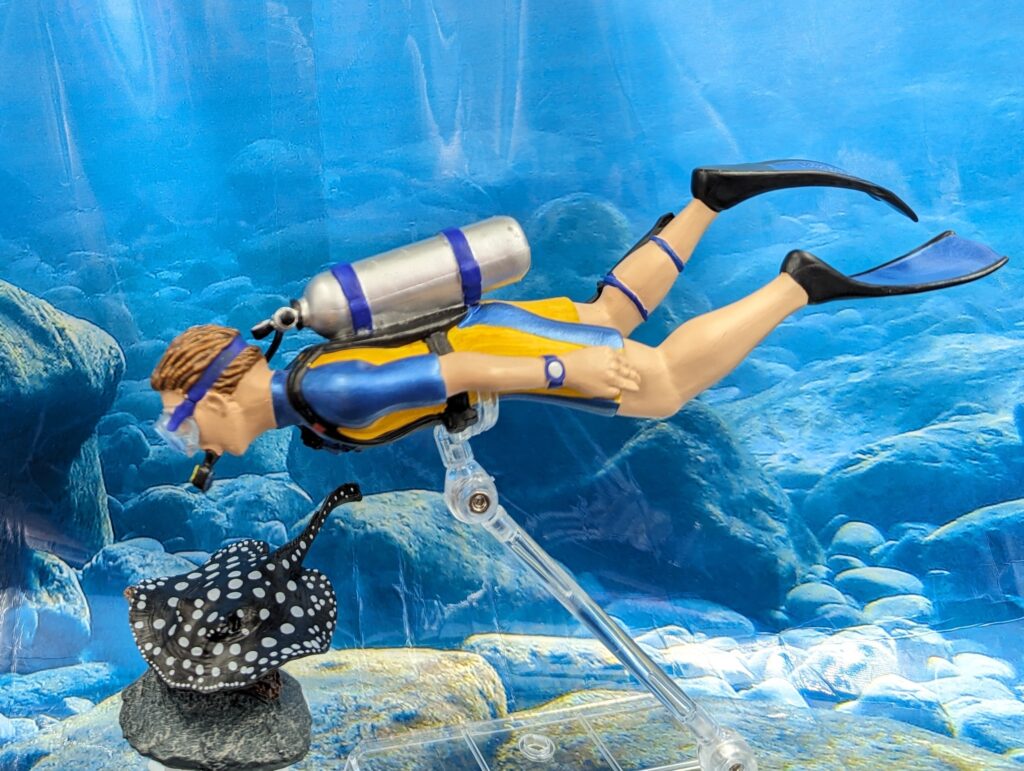
Disclaimer: links to Ebay and Amazon on the AnimalToyBlog are affiliate links, so we make a small commission if you use them. Thanks for supporting us!




[…] Credit: Animal Toy Forum […]